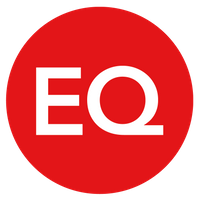Communication and motivation: using Total Reward Statements to motivate employees and drive culture

But coming up with a range of rewards that are well suited to your employees’ needs and desires is just the first step towards achieving this goal. You also need to ensure your workforce knows what benefits are on offer. And understands how much those benefits are worth to them.
This is best achieved by bringing everything you offer together in one place; as one holistic financial, physical and emotional wellbeing solution.
So, what’s the best way to provide this central hub? And to communicate it in a way that makes sure your employees know how valued they are?
We believe offering access to digital, real-time Total Reward Statements is the key to making sure each member of your team knows the true worth of his or her compensation package.
Total Reward Statements explained
A Total Reward Statement (TRS) not only brings all your benefits together in one place, it also calculates the total value of an employee’s pay and reward package, allowing them to easily see what they can claim in terms of benefits, insurance and pension.
The content does not need to be limited to rewards with a monetary value though; it can also include lifestyle and wider wellbeing benefits such as free on-site parking and volunteering days.
The objective is to give employees a better understanding of the true value of their rewards package, while also helping them to avoid missing out on the benefits available.
From an employer point of view, meanwhile, a TRS is a useful way to showcase what’s on offer above and beyond basic salary – both for potential recruits and for existing employees.
Total Reward Statements as a motivational tool
In the past, TRSs were generally printed documents that were sent out to employees once a year. Now, however, they can be integrated into online total reward hubs – meaning individuals can view them where they want, when they want, and have access to lots of nifty extra features too.
If, for example, an employee wants to see how their package has changed over time, they can find out by comparing their current TRS with previous versions using the historical data tool.
If an employee is on a performance-related pay scheme, the TRS can also be modified to show their objectives and chart how much they can earn if they meet each target.
And if an individual is on probation, or is in line for a promotion, they can visualise what their total reward package will look like in the future once any extra salary and benefits have been added to it.
Making Total Reward Statements work for your business
Designed to engage and inform more effectively than a printed document, a comprehensive, digital TRS can be a great motivational tool – especially when coupled with a company culture that prioritises employee wellbeing.
When optimised, they should quickly become an integral part of an effective reward communication programme. But for employees to get value from their TRS, they have to interact with it.
So, it’s important to consider ways to inspire workers to engage with their TRS, for example by holding training sessions to ensure line managers understand and can explain the different elements.
Experience has also shown us that placing employees’ TRS next to their online payslips encourages them to review the details of their package as a natural extension of checking their latest pay.
And thanks to the powers of our data analysis tool EQ Amplify Insight, we can now further boost engagement with TRS by pinpointing which aspects of the reward package will most appeal to different groups of employees. This allows for improved package design and communication, in line with your workforce’s diverse needs.
The author is Andrew Woolnough, director at EQ HR Solutions.
This article is provided by EQ HR Solutions (Equiniti).
Supplied by REBA Associate Member, Equiniti
Hi we are EQ; some may know us as Equiniti! We provide specialist reward, benefits and payroll solutions.







